Zone
Crash of a Learjet 35A in Lyon: 2 killed
Date & Time:
May 2, 2000 at 1439 LT
Registration:
G-MURI
Survivors:
Yes
Schedule:
Farnborough - Nice
MSN:
35-646
YOM:
1988
Flight number:
NEX4B
Crew on board:
2
Crew fatalities:
Pax on board:
3
Pax fatalities:
Other fatalities:
Total fatalities:
2
Captain / Total hours on type:
2113.00
Copilot / Total hours on type:
850
Aircraft flight hours:
4291
Aircraft flight cycles:
3637
Circumstances:
The aircraft departed Farnborough Airport at 11h22 on a charter flight to Nice with two pilots and three passengers on board, among them the F1 driver David Coulthard. At 12h22, cruising at FL390, the left engine of the aircraft suffered a failure. The crew shut down and began to descend. They declared an emergency and asked to fly to the nearest aerodrome with a runway longer than one thousand six hundred metres. Lyon-Satolas Airport, located about 62 NM away left abeam of the aircraft, was proposed. The descent with one engine shut down towards Lyon-Satolas was undertaken under radar guidance, at a high speed and with a high rate of descent. At 12h35, the pilot stabilised the aircraft at 3,000 feet, intercepted the runway 36L ILS and was cleared to land. The final was started at 233 knots according to radar data and the slow down progressive. At 12h36 min 45 s, the flaps were extended to 8°. According to the radar data, the aircraft was then at 2,400 feet, 4,4 NM from the runway threshold and at a speed of 184 knots. At 12h36 min 58 s, the landing gear was extended. At 12h37 in 03 s, the flaps were set to 20°. According to the radar data, the aircraft was then at 2,100 feet, 3,5 NM from the runway threshold at a speed of 180 knots. No malfunctions or additional problems were announced to the ATC by the crew during the final approach. At 12h38 min 08 s, the copilot told the captain that the aircraft was a little low. According to the radar data, the aircraft was then at 1,100 feet, 0,9 NM from the runway threshold at a speed of 155 knots. At 12h38 min 17 s, he repeated his warning and announced a speed 10 knots above the approach reference speed. At 12h38 min 22 s, the copilot again stated that the aircraft was a little low on the approach path and immediately afterwards asked the captain to increase the thrust. According to the radar data, the aircraft was then at 900 feet, 0,1 NM from the runway threshold at a speed of 150 knots. At 12h38 min 24 s, the captain indicated that he was losing control of the aircraft. The aircraft, over the runway threshold, banked sharply to the left, touched the ground with its wing, crashed and caught fire. Both pilots were killed while all three passengers evacuated with minor injuries.
Probable cause:
The accident resulted from a loss of yaw and then roll control which appears to be due to a failure of monitor flight symmetry at the time of the thrust increase on the right engine. The hastiness exhibited by the captain, and his difficulty in coping with the stress following the engine failure, contributed to this situation.
Final Report:


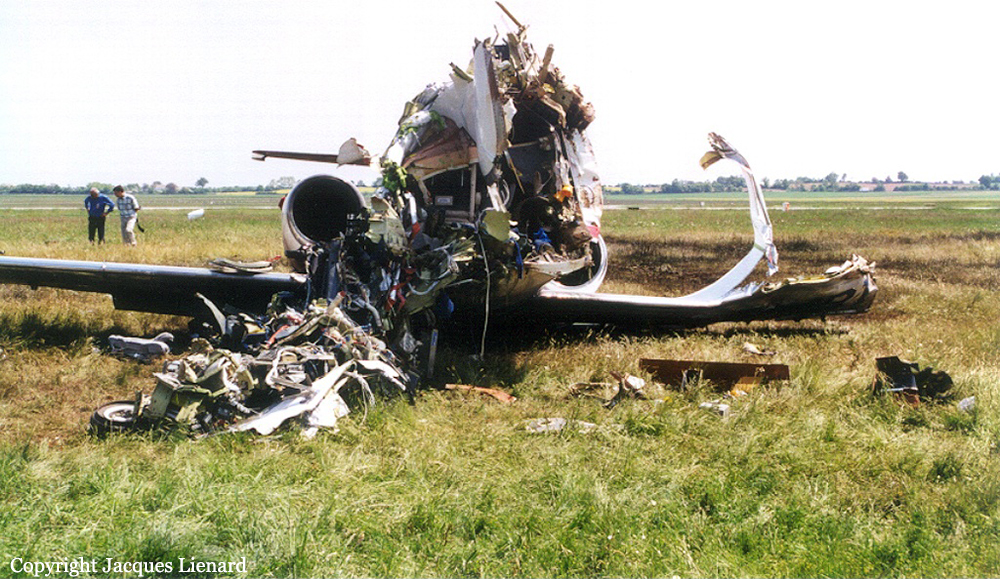
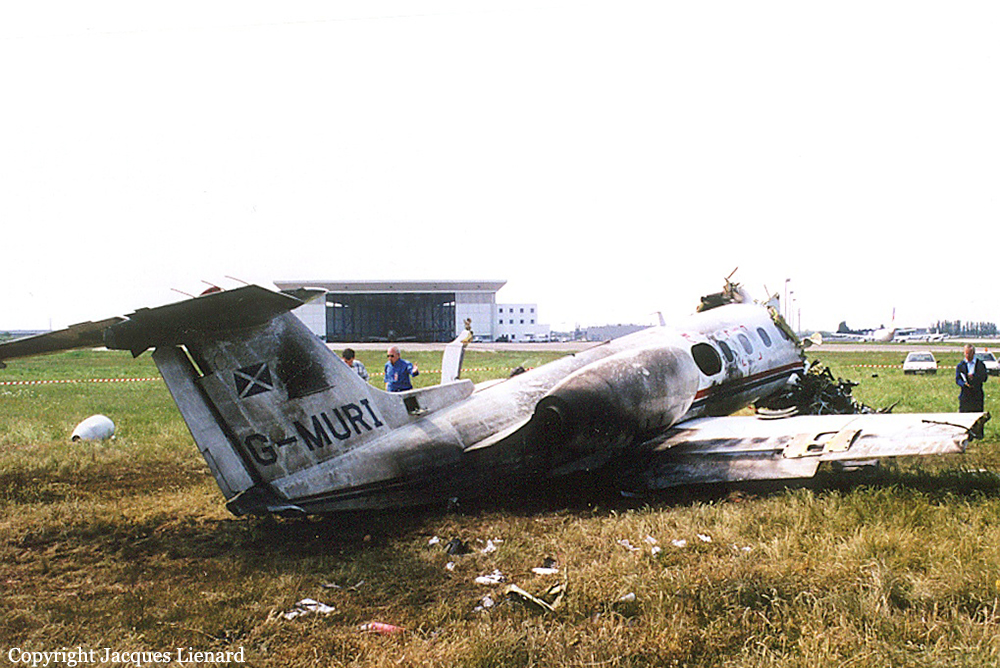

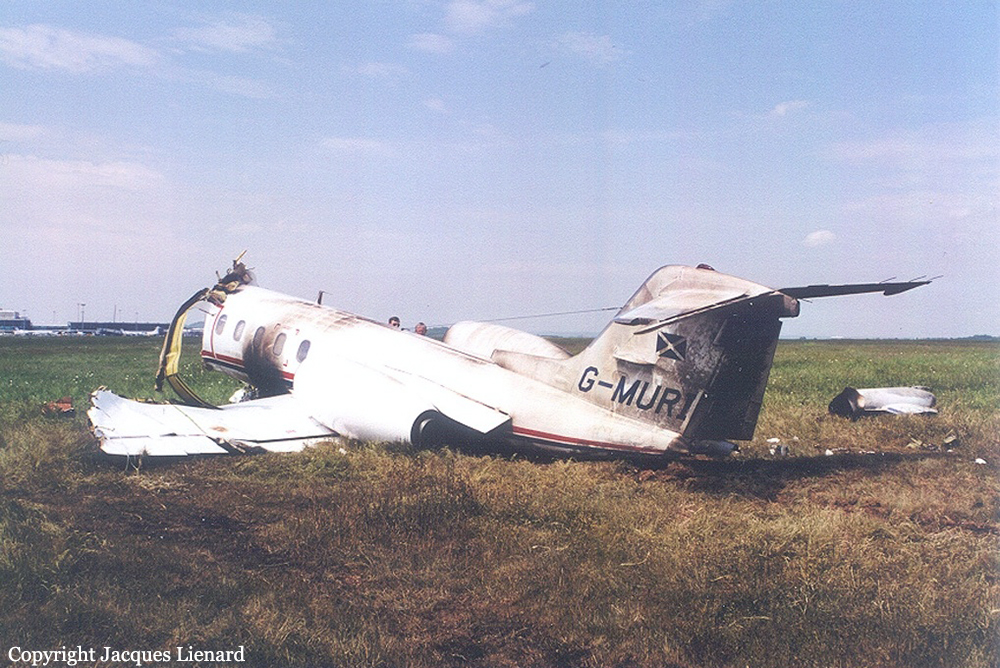
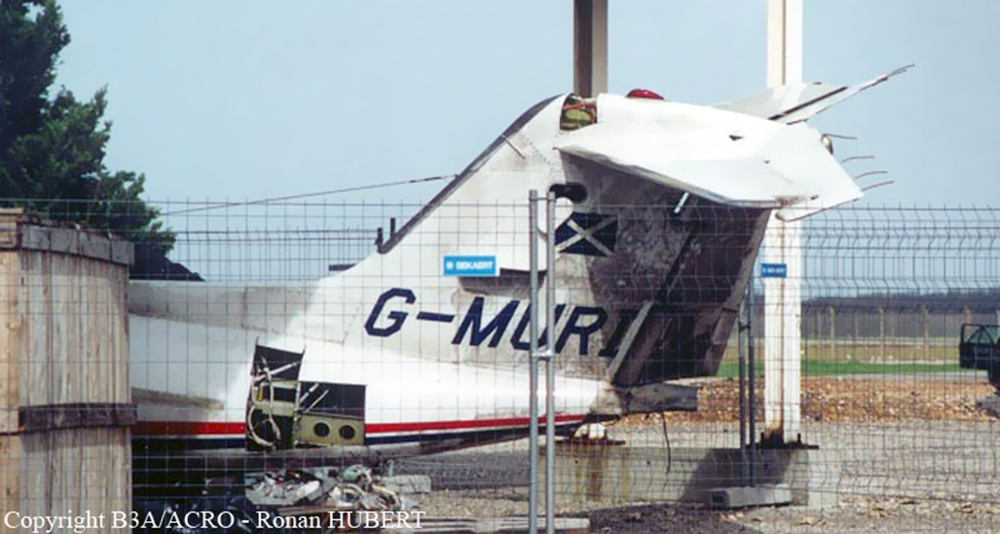
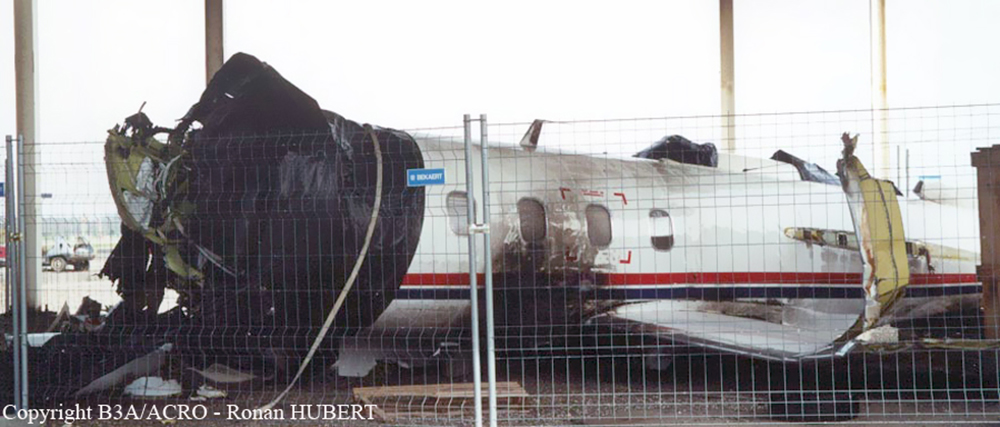
Crash of a De Havilland DHC-5D Buffalo in Farnborough
Date & Time:
Sep 5, 1984 at 1618 LT
Registration:
C-GCTC
Survivors:
Yes
Schedule:
Farnborough - Farnborough
MSN:
103
YOM:
1980
Crew on board:
2
Crew fatalities:
Pax on board:
1
Pax fatalities:
Other fatalities:
Total fatalities:
0
Captain / Total hours on type:
1300.00
Copilot / Total hours on type:
30
Aircraft flight hours:
902
Circumstances:
During the 1984 Farnborough International Air Display de Havilland Canada was to fly a display using DHC-5D C-GCTC, DHC-6 Twin Otter C-GFJQ, and both Dash 7 and Dash 8 prototypes C-GNBX and C-GDNK. Brakes were released at 16:16 and the Buffalo commenced its takeoff run as the third aircraft in the DHC combine behind the Dash 7 and Dash 8. Immediately after takeoff the Buffalo carried out a steep climb to a height of 1000 feet agl. Following a descending turn to the right, the airplane carried out a low level flypast along the display line at height of 250 feet agl and an airspeed of 215 kts. The Buffalo then entered a climbing turn to the left through about 270 degrees, before reversing bank in order to position for a right hand final approach for a STOL landing back onto runway 25. During this manoeuvre the landing gear was selected down and the copilot lowered the ramp and opened the rear cargo door. At a height of 450 feet agl the nose dropped significantly and the rate of descent increased. The DHC-5 continued in a steep side-slipping and descending turn to the right. Shortly before touchdown the rate of descent reduced slightly. The aircraft then landed very hard. The nose gear collapsed, both wings failed and the propellers disintegrated after contacting the runway. Debris caused some damage to vehicles and three aircraft in the static display area.
Probable cause:
An error of judgement by the aircraft commander. Unfavourable weather conditions, a transitory handling problem whilst flying outside the tested flight regime and the pressure on the commander to complete his flying sequence, where probably contributing factors.
Final Report:

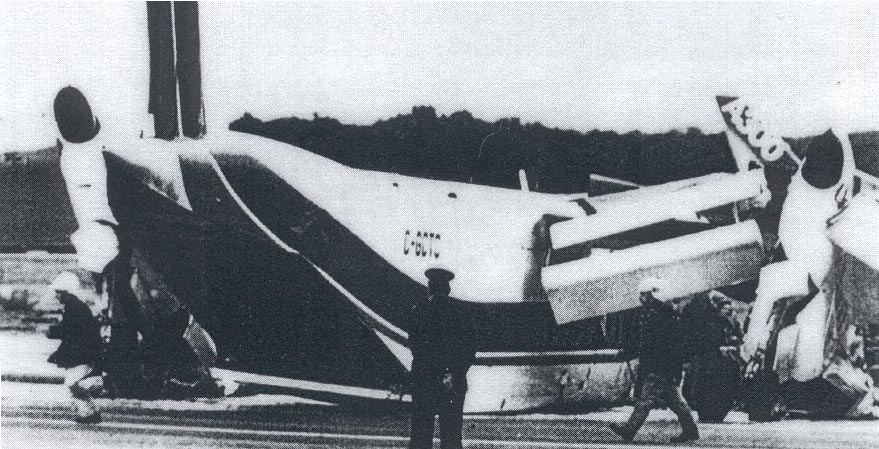
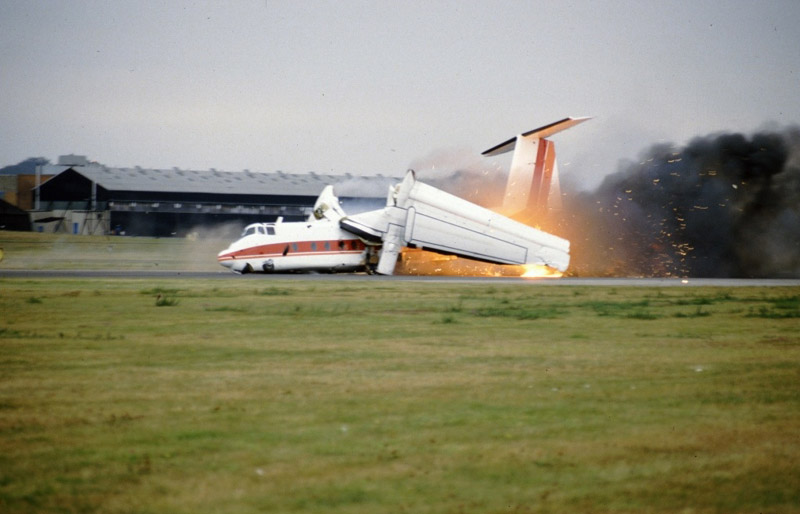
Crash of a Breguet Bre.1150 Atlantic in Farnborough: 6 killed
Date & Time:
Sep 20, 1968 at 1513 LT
Registration:
43/F-XCVX
Survivors:
No
Schedule:
Farnborough - Farnborough
MSN:
43
Crew on board:
5
Crew fatalities:
Pax on board:
0
Pax fatalities:
Other fatalities:
Total fatalities:
6
Circumstances:
Registered 43 (F-XCVX), the aircraft was engaged in a demo flight at the annual Farnborough Airshow and was carrying five officers of the flottille 22F based at Nîmes-Garons Naval Air Station, France. Following several circuits, the crew decided to make a new low pass in front of the spectators with the left engine shut down and its propeller feathered. On final, while at an altitude of 300 feet and a speed of 140 knots with the flaps down to 10°, the aircraft stalled and crashed in a huge explosion on a parking located few hundred yards short of runway. Upon impact, the empennage was torn off and crashed on the roof of the staff mess of the British Air Force Aeronautical Research Center. All five crew members were killed as well one man on the ground.
Crew:
Cpt Jean-Yves Saint-M'Leux,
OE1 G. Durand,
EV C. Lemaire,
QM R. Bequier,
S/Maj A. Goasguen.
Crew:
Cpt Jean-Yves Saint-M'Leux,
OE1 G. Durand,
EV C. Lemaire,
QM R. Bequier,
S/Maj A. Goasguen.
Probable cause:
As a result of the undercarriage having been left extended, it is possible that the air speed at the time of unfeathering the port prop was less than normal, and less than intended by the pilot. This in itself would not have resulted in an accident. Possibly because of [a] control jam, the rudder deflection necessary at this speed to balance the asymmetric thrust of the starboard engine and the drag of the unfeathered port propeller, was not applied. This was the most important cause, and allowed yaw, sideslip and roll to develop to the extent that the pilot had inadequate control of the port turn which he had initiated. The aircraft’s height and speed were insufficient to permit recovery by a reduction of power on the starboard engine. Bank therefore increased beyond the point at which level flight could be sustained, and the aircraft stalled in the turn and crashed.



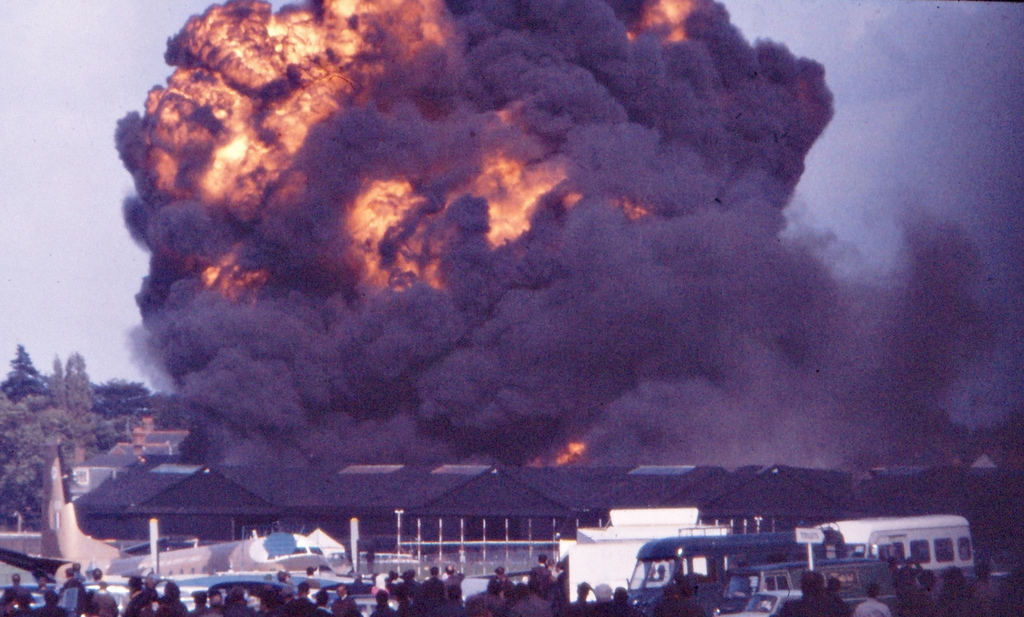
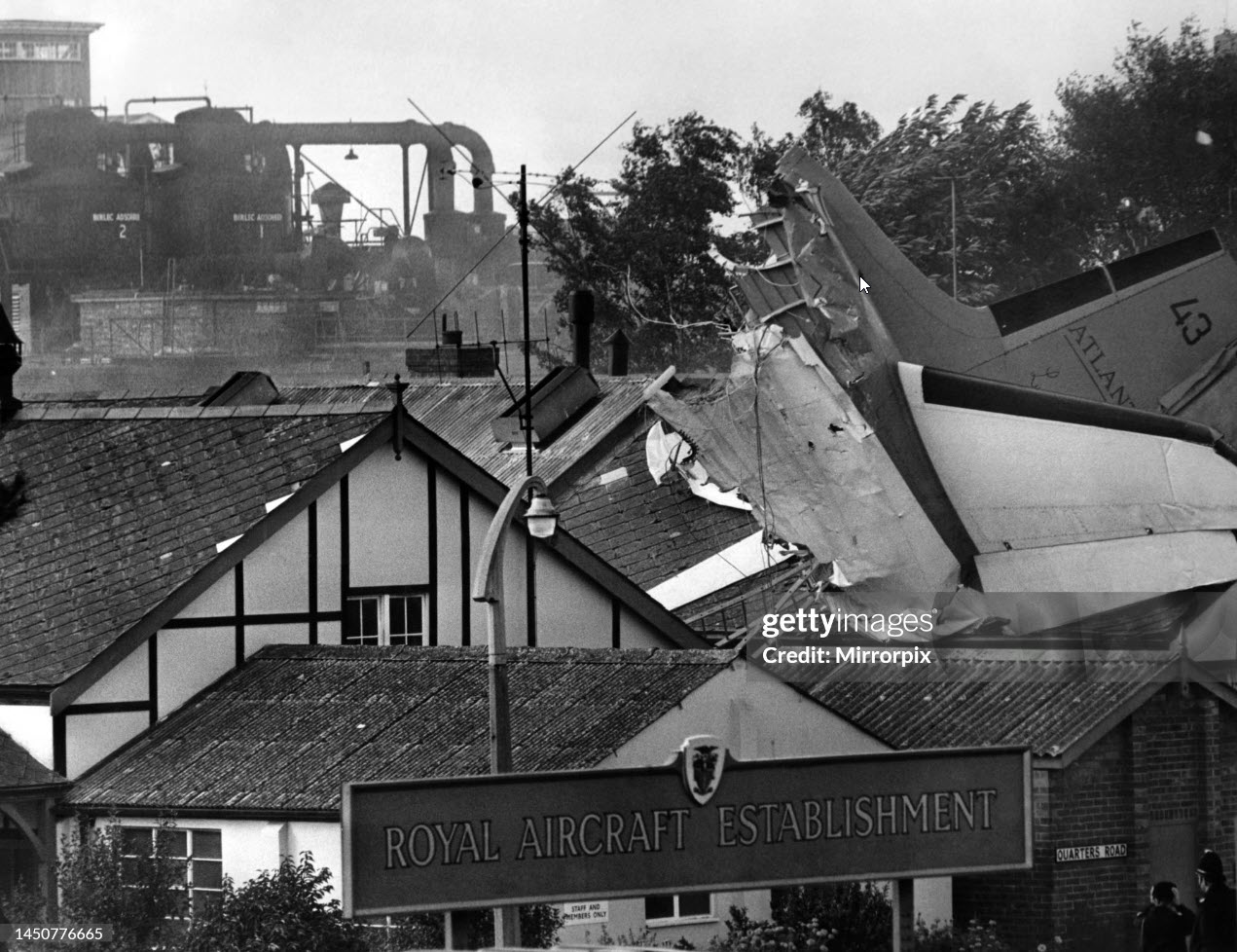
Crash of a De Havilland DH.104 Devon C.1 in Farnborough: 2 killed
Date & Time:
Nov 24, 1959
Registration:
WF984
Survivors:
No
Schedule:
Farnborough - Farnborough
MSN:
04287
YOM:
1951
Crew on board:
2
Crew fatalities:
Pax on board:
0
Pax fatalities:
Other fatalities:
Total fatalities:
2
Circumstances:
The crew was engaged in a local training mission out from Farnborough. Shortly after takeoff, the crew encountered technical problems with the undercarriage. As the airplane failed to gain sufficient height, it struck tree tops and crashed in a wooded area. Both crew members were killed.



